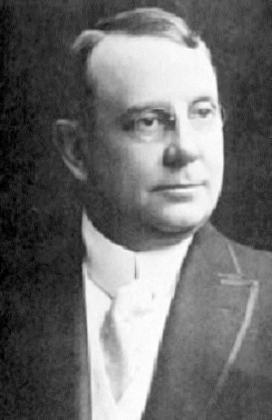Known for Texas courthouses, James Riely Gordon became nationally recognized architect
Editor’s Note: This is the second in a three-part series about the Hopkins County Courthouse. The third part will be about the courthouse’s restoration in 2001.
Scattered throughout the state of Texas and along the East Coast are architectural wonders that strike the eye with their unique and innovative design, and they trace their blueprints to one person: architect James Riely Gordon.
Born in Virginia in 1863, Gordon’s family moved to San Antonio when he was 11 years old, and there Gordon built his career.
Coming from a well-educated family in which his father was a civil engineer, Gordon was sharp, but he never received a formal education in architecture like many of his other contemporaries who learned their skills in universities on the East Coast or even Europe.
“Gordon was self-taught as an architect,” Chris Meister, author of James Riely Gordon: His Courthouses and Other Public Architecture, said. “He had on-the-job training and learned while he worked.”
Designing courthouses was Gordon’s specialty, and his first designed courthouse was the 1889 Aransas County Courthouse in Rockport. He would design 15 Texas county courthouses, including ones in Hopkins, Bexar, Ellis and McLennan.
“Gordon had a novel design for these courthouses,” Meister said. “Multiple entrances would provide natural ventilation as the breeze was caught, lifted through the courthouse and went out of the towers, and it was very popular with Texas counties.”
Each courthouse Gordon designed was unique because he worked with whatever funds the county could lend him, but given what a courthouse represented to the rapidly expanding Texas, the money was worth it.
“These grand courthouses made a statement about a commitment to the law,” Meister said. “This sense of permanence for an established community that valued the rule of law attracted immigrants to Texas.”
The Romanesque Revival style Gordon mastered with its features like round arches, thick masonry walls and rounded towers also gave the impression that the courthouses “had been there forever,” Meister said.
The one of the largest courthouses that Gordon designed was the Ellis County Courthouse in Waxahachie that stands nine stories tall, and its floor plans, Meister said, are similar to that of the Hopkins County Courthouse except larger in scale.
Of the 15 courthouses that Gordon designed, 12 remain, and all are deemed Texas Historic Landmarks by the Texas Historical Commission. He also designed the Arizona State Capitol Building in Phoenix constructed in 1900 that still serves as the state’s legislative building.
Gordon moved from San Antonio to Dallas in 1900, and then he moved to New York in 1902. According to Meister, the decision was based on the fact that designing courthouses required a good deal of traveling, and as he aged, Gordon reasoned city architecture would be easier.
“Gordon had a financial setback when he arrived in New York,” Meister said. “He thought he was partnering with an established architect, but that architect ended up leaving in the middle of the night with Gordon responsible for his unfinished projects and debts.”
While Gordon did do other work besides courthouses on the East Coast, he returned to his roots in designing courthouses in Garrett County, Maryland and Bergen County, New Jersey, both of which have survived.
In his later years, Gordon never went through the same decline that other architects did at the time, Meister said, and the architect would keep designing until his death in 1937.
“He was the first architect to come from west of the Mississippi River to be known nationally without an education in the east,” Meister said. “He was very successful and very involved in his profession.”
Gordon was so well-known in the east, his obituary in the New York Times did not mention Texas anywhere, a “glaring omission” according to Meister.
“I asked his granddaughter when I was researching if he still has his Texas accent when she knew him,” Meister said. “She said yes.”


